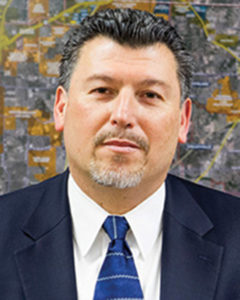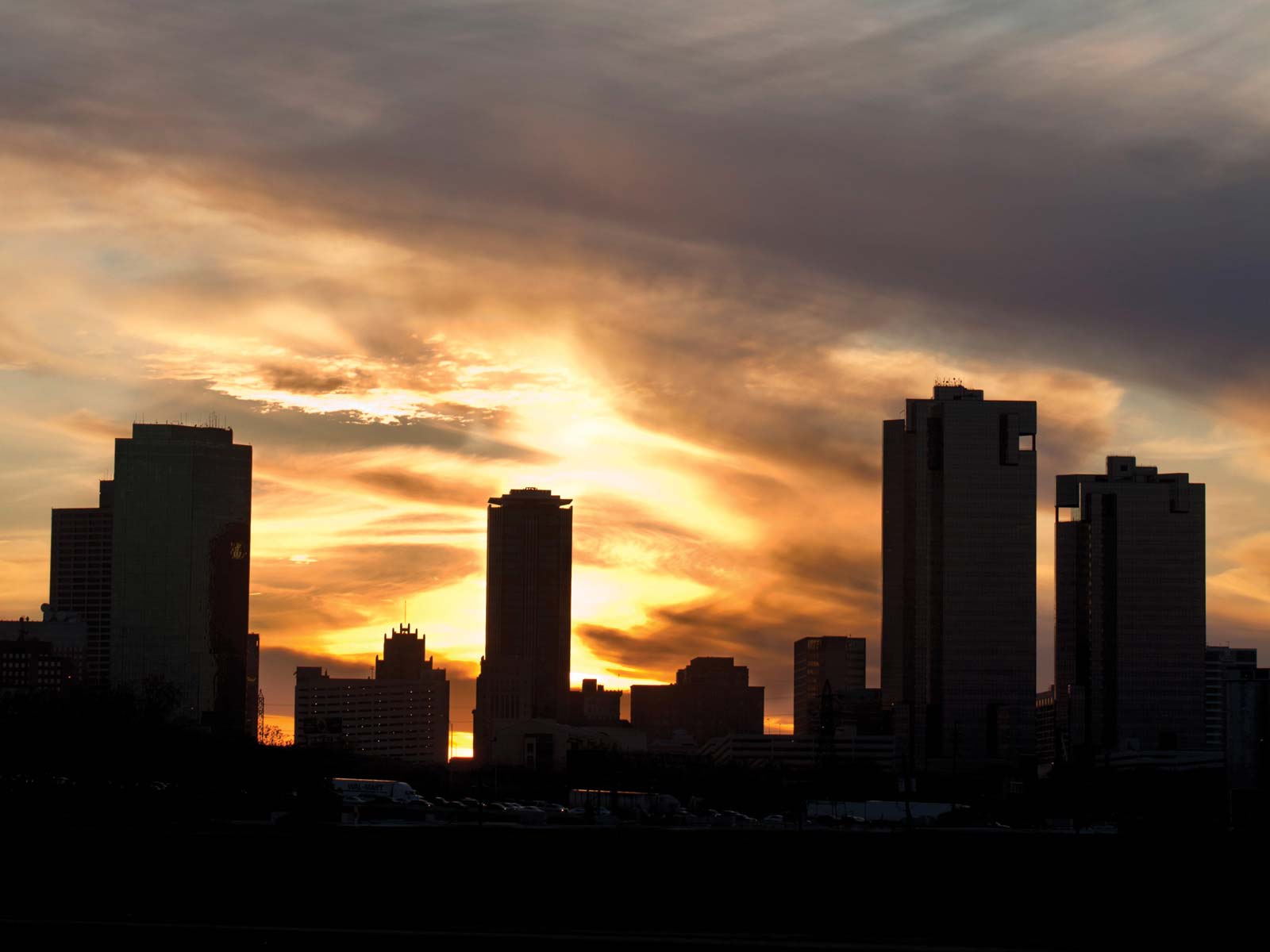When city, state, and T officials were initially pushing for TEX Rail back in 2012, they argued that Fort Worth needed some way to compete with Dallas for the tourism dollars coming from DFW Airport.
“If you’re a tourist or a businessperson flying into DFW, and you’re used to taking transit, what are you going to do?” Price said. “Are you going to take a $9 ride to Dallas on the [DART] orange line, or are you going to take a $70 cab ride to Fort Worth? TEX Rail will give us that option to be there.”
TEX Rail, which would ultimately drop riders off Downtown, represents more than just a way to boost tourism, Price said. It’s Fort Worth’s first stake in the ground for improving and expanding our public transportation system in a meaningful way.
“We’re the 16th largest city in the nation now, and we have to start thinking about our transit systems,” she said. “All major cities have strong, good transit systems. In Texas, there’s never been a big push. In Dallas they’ve done it. In Houston, there’s a light rail that’s coming along. Austin has one that’s floundered, but it’s back on track, shall we say. But Fort Worth hasn’t done that.”
Colleyville Republican Senator Burton penned an op-ed in the Fort Worth Star-Telegram in January in which she accused local leaders of getting into bed with the “social engineers” in Washington D.C.
“The two obvious problems with this are that our local officials are entering into a multiyear, billion-dollar project with the irrational and fiscally irresponsible federal government and that we are artificially creating supply for a commodity that has little demand,” she writes. “Further, the environmental impact study for TEX Rail, published in May 2014, states, ‘Overall, the commuter rail alternative has negligible effects on traffic patterns and volumes on parallel roadways.’ ”
In May, the Colleyville City Council passed a resolution permanently barring the city’s participation in the construction of any rail station within the city limits.
*****
Mackenzie Crowder, a 28-year-old nurse who lives in the Elan West 7th Apartments, smack in the heart of the development, said she walks everywhere around the upscale corridor.
Though she feels safe on the south side of West 7th Street, crossing is a different story.
“The cars don’t slow down for you,” she laughed. “They kind of bottleneck at the [Carroll Street] light near Montgomery Plaza, but that’s really the only safe place to cross.”
Since 2007, the West 7th area has become one of the more densely populated areas of our inner city. With more than a dozen luxury apartment complexes in and around the corridor, it represents one of the big challenges for urban designers and public transit experts. The street, now affixed with painted-on bike lines, is still the main artery for people trying to get downtown from the West Side and back.
Buchanan said that areas like the West 7th development are built with the nearby transportation network in mind. The development is its own closed-off ecosystem because raging death machines are speeding by just a few feet away.
“It’s hard to talk about transportation without talking about development, since they are deeply intertwined,” he said. “The form of development you get is basically a result of the transportation network you build.”
The problem with fixing West 7th Street is two-fold: 1.) It’s owned by the Texas Department of Transportation, not the city. And 2.) the city has only a finite amount of money to go around spending on capital improvement projects like narrowing roads to slow down traveling vehicles.
As The T prepared its master plan, the city was working on its Master thoroughfare plan to deal with road projects. The two entities worked closely together and even shared committee members.
Ballard said that The T and the city are “tied together at the hip” on where the city decides to build roads and bolster existing infrastructure.
“It’s important to have a good road network because the majority of our passengers are going to travel on buses,” he said. “We need good roads for what we do.”

Assistant City Manager Jay Chapa said that finding the balance between funding the inner-city projects and the sprawling outer-edges of the city is the great balancing act.
“There is a need to get [West 7th] updated to a more walkable, complete street overall because of the type of development that’s occurred there,” he said. “People are walking and biking and that kind of thing. That wasn’t on the radar before our last bond program in 2012-13, when the planning went through for the 2014 bond program. West 7th didn’t have the density it has now. I would imagine that would be on our next go-around.”
For neighborhoods like the one around South Main Street, development is aided by that area’s tax increment financing district, which uses tax money from local businesses toward infrastructure. Though parts of the roads in that neighborhood still look like a grenade practice range, plans are in place to repair the streets. That neighborhood and the entire Near Southside do not have to depend on funding from the city.
In many other areas, the roads don’t always match the surrounding development.
When the economy crashed in 2007, it didn’t stop developers from building houses and business districts, particularly in the far northern reaches of Fort Worth. Consequently, thousands of homes popped up in areas that had only inadequate two-lane roads and, in some cases, dirt roads.
“During the downturn of the economy, we didn’t have the money to keep up with that growth,” Chapa said. “Now there has to be a focus to get those arterials to be more urbanized.”
Thanks to laws passed between 2005 and 2010, the city requires developers to build better roads around their developments or pay a transportation impact fee that allows the city to build the roads. But, Chapa conceded, the city is still playing catch up after the crash in 2007.
Every new street, he said, is being built with public transit in mind.
“All of our arterials are being built to allow us to have public transportation on them,” he said. “So right now, The T is our only public transportation. They only have buses, so that’s what we’re focused on.”
Chapa went on to say the city is pushing the complete streets model of urban design in which walkability and biking are emphasized, which requires narrow roads and slower traffic.
“Everything that’s being told to us about millennials is that they want to have those kinds of options,” he said. “They don’t necessarily want to own cars. They want to be able to walk or ride a bike and do it in a safe environment.”
Critics of the city say that it has been too slow to embrace the complete streets model. Buchanan points to the city’s parking requirements as an example of how it still hasn’t quite caught up to modern standards.
“Those minimum parking requirements tend to kill a lot of progressively designed urban development,” he said. “Not only does that add cost to the housing that’s being built –– everyone one of those garages costs anywhere from $25,000 and $35,000, depending on the location, and that gets passed on to the people who live in the apartments.
“But it also means that a lot of smaller projects in places like ones on the Near Southside just don’t happen. They either don’t have the room or don’t have the money to build the parking to serve it all.”













The public transportation in Tarrant county is so lacking. I live between 820 and 287, work just south of 20. I’ve battled 35 for 15 years. I come into work an hour early to avoid the traffic. Most days I get off 35 at 30 to avoid the constant congestion between I30 and I820. As the new toll roads between 360 and 820 have shown, the new toll lanes will not improve traffic for the majority of people, just those willing to pay the toll. Then we all suffer when the toll lanes disappear and everyone is forced back to the original road.
I can’t use public transportation to get 17 miles up and down one of the major highways in this city. I don’t understand how such a large city has such a lacking public transportation system.
I applaud the city and the mayor that FW wants to develop a more walkable city. But I think this article addresses 3 different things.
First, the “Frogger” game on 7th street, which can easily be solved in 2 words: pedestrian bridges. We have them in several areas of high traffic in the city and surrounding areas.
Second, the bus system, which is a bigger problem. My SO takes the bus to work each day; he has to leave the house at 6 am and take 3 different buses to get to work while I leave at 7:15 am and it takes me 11 minutes to drive from driveway to parking spot. I’ll never take a a bus when it takes an hour and 15 minutes longer to get to the same place. (We work together.) So, the city can add more buses, it can start using the interstates for express buses, or I just don’t see buses as the only answer.
Finally, overall traffic and congestion in general. Fort Worth is not an island unto itself. It is a world class destination for people all over the state and the country. It has exquisite dining, cultural events, museums, nature, and experiences no one can get anywhere else – Bass Hall, the Botanical Gardens, Amon Carter, Kimbell and Modern, the stockyards, the Stock Show and Rodeo, Tim Love’s and John Bonnell’s restaurants among many others. No one, and I mean no one is dressing in their finest, hopping on their bicycles and peddling down the interstate from Keller or Weatherford, or Granbury, or Brock/Peaster/Aledo/Azle/Mineral Wells/Justin/Roanoke or anywhere else to eat dinner at Waters or Eddie V’s. No one is strapping their small children into their helmets to peddle down I35 or I30 or I20 to come to to the FW Science and History Museum on a Saturday afternoon. The real issue is creating a light rail system to connect all these towns (As DART connects Dallas,Irving, Mesquite, Carrollton, and others.) FW will continue to suffer traffic and over-crowded streets and interstates until we create this system in partnership with these towns.
Obviously, Burton has never been on a packed eastbound TRE on a weekday. People are using transit now. There is demand.
Hey, one can be really, really smart but also pretty dumb at the same time. That’s what we got here…I bet you that she is a Republican. I have seen plenty of them just like that.
God bless America and all our ships at sea….just checking to see if this note needs some moderation.